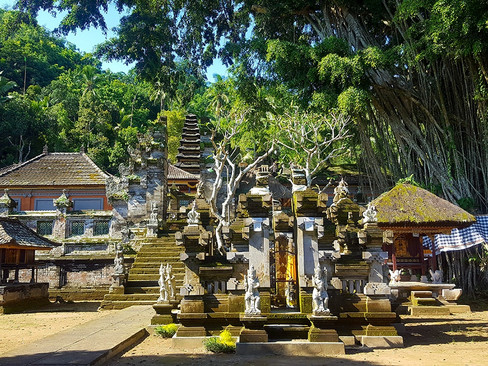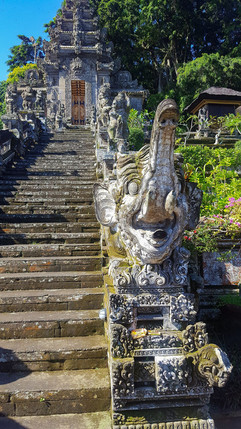Kehen - The Temple of Fire
- Shannon
- Sep 16
- 3 min read
Flames of Faith - The Spiritual Heart of Pura Kehen
First mentioned in ancient copper inscriptions from the 9th century, Kehen Temple was originally known as Pura Hyang Api, a sacred site dedicated to Agni, the Hindu God of fire. This powerful deity symbolises not just destruction but also renewal and purification, embodying the transformative force of flame. Over the centuries, the temple underwent several name changes as it evolved with the shifting tides of Balinese history and spirituality. By the 13th century, it was finally renamed Pura Kehen, a name derived from the Balinese word keren, meaning "flame." This subtle yet powerful reference underscores the temple’s continued reverence for the fiery element, maintaining its central role as a sanctuary for the god of fire.

Located in the cool upland region of Bangli Regency, one of the nine ancient kingdoms of Bali, the name Bangli derives from bang giri, meaning "red mountain forest," a fitting tribute to the rich, verdant landscape that surrounds the area. This tranquil setting adds an air of mystique to Pura Kehen, as the temple's architectural features mirror those of Bali's Mother Temple, Besakih, albeit in a more compact and intimate form. The temple's intricate tiered shrines, massive stone carvings and grand gateways all echo Besakih’s sacred design, offering visitors a taste of Bali’s deep spiritual traditions in a serene and isolated environment.

Guarding the temple is a sacred banyan tree, believed to be over 700 years old, which stands as a silent sentinel over the complex. The banyan, with its sprawling roots and vast canopy, is considered a symbol of strength and longevity, embodying the timeless connection between the temple and the divine forces it represents. Local legend whispers that the tree is infused with spiritual energy, a living protector of the sacred site, offering blessings to those who approach it with reverence.
This primeval terraced temple complex, the second largest in Bali, is testament to the island's spiritual grandeur and architectural mastery. The temple courtyards are reachable via an ascent up 38 stairs, referred to as the "Steps to Heaven". At the top of the staircase, visitors pass through a monumental gate, the candi kurung, which serves as a threshold between the earthly realm and the sacred space within.

Within the inner courtyard of Kehen Temple are a number of pavilions that serve as resting places for mountain gods, along with a sacred 11-tiered Meru tower dedicated to Brahma, the Hindu god of creation. This towering Meru symbolises Mount Meru, the cosmic axis in Hindu cosmology believed to be the source of all life. Brahma, regarded as the temple's guardian, is thought to watch over the entire complex. Nearby, the Padmasana lotus shrine stands prominently with a large stone throne carved in intricate bas reliefs. Atop this throne rests a depiction of Bedawang Nala, the mythological world turtle whose eternal shifting is believed to cause Bali's earthquakes. Coiled around him are two snakes, representing the essential human needs of safety, nourishment, shelter and clothing.
Together, these sacred elements form a powerful visual metaphor for the interconnected balance between divinity, nature, and humanity. The temple itself was historically used for royal oath taking ceremonies, as those found to have broken their vows faced a fearsome and enduring curse, known as sapata. Today, while its political function has faded, the temple remains a deeply spiritual site where prayers are offered for fertility, prosperity and lasting peace.

🗺️ Location
Jalan Sriwijaya, Cempaga Village, Bangli Regency, East Bali, Indonesia
🚆 How to get there
Kehen Temple is roughly 26 km's northeast of Ubud and takes about 45 minutes by car, depending on traffic. If you're coming from Denpasar, the distance is approximately 43 km's north, typically requiring around 2 hours to reach by car. Public transportation options are very limited, so hiring a private driver or scooter rider for a full day tour is the most practical option. A car will set you back about 60,000 - 80,000 IDR for the entire day.
⭐ Attraction Info
Entry to the temple costs around 15,000 IDR for adults, while children can usually enter free of charge. The temple is generally open to visitors between 9am - 5pm daily, although hours may vary during religious ceremonies. Visitors are expected to wear modest clothing and a sarong, which can often be borrowed or rented at the entrance, if you don't travel with your own.


















